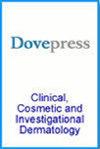Genetic Causal Relationship Between Sex Hormones and Basal Cell Carcinoma: A Two-Sample Mendelian Randomization Study
IF 1.9
4区 医学
Q3 DERMATOLOGY
引用次数: 0
Abstract
Background: The primary aim of this study was to explore whether sex hormones affect the occurrence of basal cell carcinoma (BCC) from a genetic perspective using a two-sample Mendelian randomization (MR) study.Methods: Exposure and outcome data for this MR analysis were derived from previously published GWAS studies. In this study, estradiol, sex hormone-binding globulin (SHBG), bioavailable testosterone, and total testosterone were used as exposures, and BCC was used as the outcome for the two-sample MR analysis. The random effects inverse variance weighted (IVW) model was the primary analytical model, and the simple mode, weighted median, MR-Egger, and weighted mode methods were applied as complementary approaches. Furthermore, the “leave-one-out” sensitivity analysis was performed to assess stability, Cochran’s Q test to evaluate heterogeneity, and the MR-Egger intercept test to analyze horizontal multiplicity.
Results: The two-sample MR analysis of the sex hormone and BCC showed that estradiol, sex hormone-binding globulin (SHBG), bioavailable testosterone, and total testosterone were not a causal factor in BCC (P> 0.05). The results of the heterogeneity test and horizontal pleiotropic analysis showed that no heterogeneity or horizontal pleiotropic existed in all MR analyses (Cochran’s Q-P> 0.05, Egger intercept-P> 0.05).
Conclusion: The two-sample MR analysis showed that estrogen and testosterone did not affect the occurrence and development of BCC at the genetic level.
性激素与基底细胞癌之间的遗传因果关系:双样本孟德尔随机研究
背景:本研究的主要目的是从遗传角度探讨性激素是否影响基底细胞癌(BCC)的发生:本研究的主要目的是通过双样本孟德尔随机化(MR)研究,从遗传学角度探讨性激素是否会影响基底细胞癌(BCC)的发生:本次 MR 分析的暴露和结果数据来自于之前发表的 GWAS 研究。在本研究中,雌二醇、性激素结合球蛋白(SHBG)、生物可利用睾酮和总睾酮被用作暴露因子,BCC 被用作双样本 MR 分析的结果。随机效应逆方差加权(IVW)模型是主要的分析模型,简单模式、加权中位数、MR-Egger 和加权模式方法作为补充方法被应用。此外,还进行了 "leave-one-out "敏感性分析以评估稳定性,Cochran's Q 检验以评估异质性,MR-Egger 截距检验以分析水平多重性:性激素与 BCC 的双样本 MR 分析表明,雌二醇、性激素结合球蛋白(SHBG)、生物可利用睾酮和总睾酮不是 BCC 的致病因素(P> 0.05)。异质性检验和水平多向性分析结果显示,所有 MR 分析均不存在异质性或水平多向性(Cochran's Q-P> 0.05,Egger 截距-P> 0.05):结论:双样本 MR 分析表明,雌激素和睾酮在遗传水平上不影响 BCC 的发生和发展。
本文章由计算机程序翻译,如有差异,请以英文原文为准。
求助全文
约1分钟内获得全文
求助全文
来源期刊

Clinical, Cosmetic and Investigational Dermatology
Medicine-Dermatology
CiteScore
2.80
自引率
4.30%
发文量
353
审稿时长
16 weeks
期刊介绍:
Clinical, Cosmetic and Investigational Dermatology is an international, peer-reviewed, open access journal that focuses on the latest clinical and experimental research in all aspects of skin disease and cosmetic interventions. Normal and pathological processes in skin development and aging, their modification and treatment, as well as basic research into histology of dermal and dermal structures that provide clinical insights and potential treatment options are key topics for the journal.
Patient satisfaction, preference, quality of life, compliance, persistence and their role in developing new management options to optimize outcomes for target conditions constitute major areas of interest.
The journal is characterized by the rapid reporting of clinical studies, reviews and original research in skin research and skin care.
All areas of dermatology will be covered; contributions will be welcomed from all clinicians and basic science researchers globally.
 求助内容:
求助内容: 应助结果提醒方式:
应助结果提醒方式:


